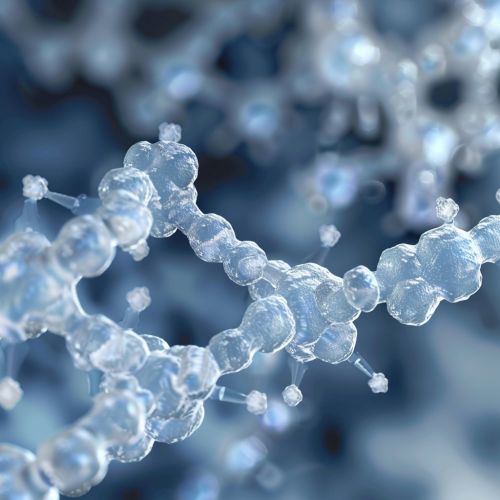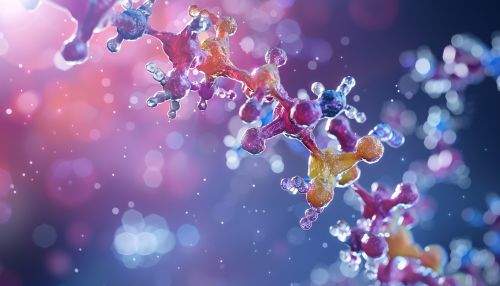Glycerophospholipids: Difference between revisions
No edit summary |
No edit summary |
||
| Line 7: | Line 7: | ||
Glycerophospholipids are composed of a glycerol molecule bonded to two fatty acids and a phosphate group. The glycerol backbone has three carbon atoms, each of which is bonded to a hydroxyl group. The fatty acids are esterified to the first and second hydroxyl groups, while the phosphate group is attached to the third hydroxyl group. The phosphate group can be further bonded to various head groups, such as choline, ethanolamine, serine, or inositol, forming different types of glycerophospholipids like phosphatidylcholine, phosphatidylethanolamine, phosphatidylserine, and phosphatidylinositol, respectively. | Glycerophospholipids are composed of a glycerol molecule bonded to two fatty acids and a phosphate group. The glycerol backbone has three carbon atoms, each of which is bonded to a hydroxyl group. The fatty acids are esterified to the first and second hydroxyl groups, while the phosphate group is attached to the third hydroxyl group. The phosphate group can be further bonded to various head groups, such as choline, ethanolamine, serine, or inositol, forming different types of glycerophospholipids like phosphatidylcholine, phosphatidylethanolamine, phosphatidylserine, and phosphatidylinositol, respectively. | ||
[[Image:Detail-79761.jpg|thumb|center|Close-up image of a phospholipid molecule with a glycerol backbone, two fatty acid tails, and a phosphate group attached to a head group.]] | [[Image:Detail-79761.jpg|thumb|center|Close-up image of a phospholipid molecule with a glycerol backbone, two fatty acid tails, and a phosphate group attached to a head group.|class=only_on_mobile]] | ||
[[Image:Detail-79762.jpg|thumb|center|Close-up image of a phospholipid molecule with a glycerol backbone, two fatty acid tails, and a phosphate group attached to a head group.|class=only_on_desktop]] | |||
== Types of Glycerophospholipids == | == Types of Glycerophospholipids == | ||
Latest revision as of 03:01, 20 May 2024
Introduction
Glycerophospholipids, also known as phosphoglycerides, are a class of lipids that are a major component of all cell membranes as they can form lipid bilayers. Their structure typically consists of a glycerol backbone, two fatty acid tails, and a phosphate group attached to one of several possible head groups. The diversity of glycerophospholipids arises from the variation in the fatty acid chains and the head groups, which can significantly influence the properties and functions of the membranes they constitute.
Structure and Composition
Glycerophospholipids are composed of a glycerol molecule bonded to two fatty acids and a phosphate group. The glycerol backbone has three carbon atoms, each of which is bonded to a hydroxyl group. The fatty acids are esterified to the first and second hydroxyl groups, while the phosphate group is attached to the third hydroxyl group. The phosphate group can be further bonded to various head groups, such as choline, ethanolamine, serine, or inositol, forming different types of glycerophospholipids like phosphatidylcholine, phosphatidylethanolamine, phosphatidylserine, and phosphatidylinositol, respectively.


Types of Glycerophospholipids
Phosphatidylcholine (PC)
Phosphatidylcholine is one of the most abundant glycerophospholipids in cell membranes. It is characterized by a choline head group attached to the phosphate. PC plays a crucial role in membrane structure and function, contributing to membrane fluidity and permeability.
Phosphatidylethanolamine (PE)
Phosphatidylethanolamine contains an ethanolamine head group. It is prevalent in the inner leaflet of the plasma membrane and is involved in membrane fusion and curvature. PE is also a precursor for the synthesis of other lipids.
Phosphatidylserine (PS)
Phosphatidylserine has a serine head group and is typically found in the inner leaflet of the plasma membrane. PS is involved in cell signaling, particularly in the process of apoptosis, where it translocates to the outer leaflet as a signal for phagocytosis.
Phosphatidylinositol (PI)
Phosphatidylinositol features an inositol head group. PI is a key component in cell signaling pathways, particularly in the form of phosphatidylinositol 4,5-bisphosphate (PIP2), which can be phosphorylated to generate secondary messengers like inositol triphosphate (IP3) and diacylglycerol (DAG).
Functions of Glycerophospholipids
Glycerophospholipids are essential for various cellular functions, including:
- **Membrane Structure**: They form the lipid bilayer, providing structural integrity and fluidity to cell membranes.
- **Signal Transduction**: Certain glycerophospholipids act as precursors for signaling molecules. For example, PI can be phosphorylated to produce PIP2, which plays a critical role in signal transduction.
- **Membrane Trafficking**: Glycerophospholipids are involved in vesicle formation, fusion, and trafficking within cells.
- **Apoptosis**: PS exposure on the cell surface acts as an "eat-me" signal for phagocytes during programmed cell death.
Biosynthesis of Glycerophospholipids
The biosynthesis of glycerophospholipids involves several enzymatic steps that occur in the endoplasmic reticulum (ER) and the Golgi apparatus. The process begins with the acylation of glycerol-3-phosphate to form lysophosphatidic acid (LPA), which is then acylated to produce phosphatidic acid (PA). PA serves as a precursor for the synthesis of various glycerophospholipids through different pathways, depending on the head group attached.
Metabolism and Degradation
Glycerophospholipids are continuously synthesized and degraded within cells. Enzymes such as phospholipases play a key role in the degradation process. Phospholipase A2 (PLA2) hydrolyzes the fatty acid at the sn-2 position, releasing arachidonic acid, a precursor for eicosanoids. Phospholipase C (PLC) cleaves the phosphodiester bond, generating diacylglycerol (DAG) and a phosphorylated head group, while phospholipase D (PLD) removes the head group, producing phosphatidic acid (PA).
Clinical Significance
Glycerophospholipids are implicated in various diseases and conditions. Alterations in their composition can affect membrane properties and cellular functions, leading to pathophysiological states. For example, abnormal levels of PS exposure are associated with coagulation disorders and autoimmune diseases. Dysregulation of PI metabolism is linked to cancer and neurodegenerative diseases.
Research and Applications
Research on glycerophospholipids has led to significant advancements in understanding cell biology and developing therapeutic interventions. Lipidomics, the large-scale study of pathways and networks of cellular lipids, has provided insights into the role of glycerophospholipids in health and disease. Additionally, glycerophospholipids are used in drug delivery systems, such as liposomes, to enhance the efficacy and targeting of therapeutic agents.
